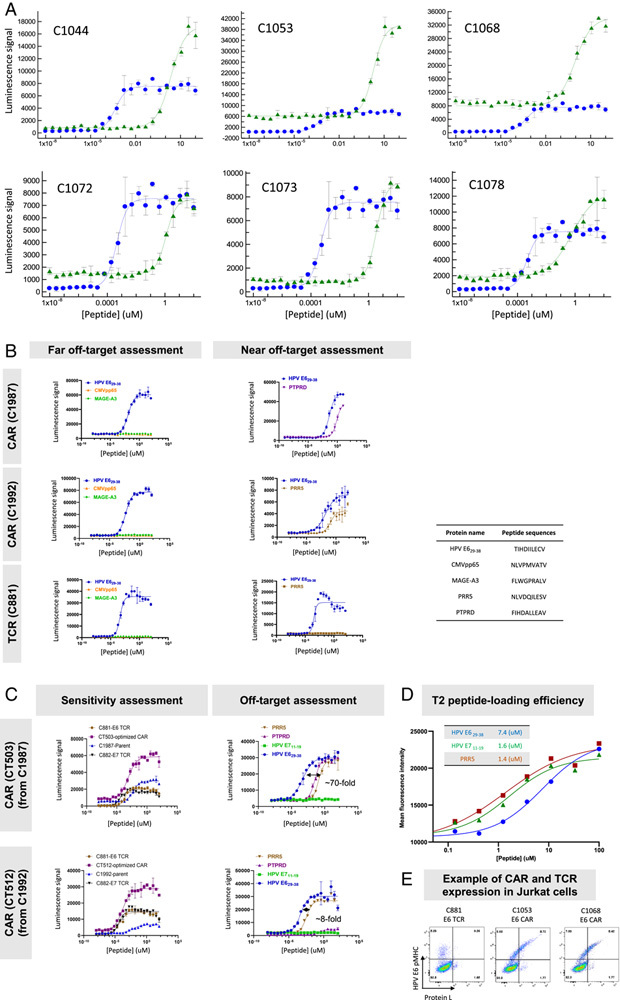FIGURE 4.

Sensitive and selective HPV E629–38 primary, light-chain optimized, and heavy-chain optimized binders identified by sorting (examples of the best binders in peptide-loading Jurkat:T2 assay). Each data point is an average of 3 replicates, and all experiments were run at least twice, except where noted. An example of the repeated experiments is shown in this figure. A, Examples of dose-response curves of on-target activity of HPV E629–38 binders from primary HuTARG screen (green) compared with the HPV E629–38 TCR (blue). Their EC 50 and E maximum are summarized in Table 3. B, Examples of HPV E629–38 light-chain optimized binders: sensitivity, near and far off-target selectivity. C, Examples of HPV E629–38 heavy-chain optimized binders: sensitivity, near and far off-target selectivity. D, Peptide-loading efficiency comparison of HPV E629–38, HPV E711–19, and PRR5. This experiment was run once. MFI was measured after staining with W6/32 antibody (see the Results section). E, Flow plot of CAR and TCR expression in Jurkat cells. The sequences of peptides used in this figure are listed in the inserted table. Peptide-loading efficiencies are summarized in the inserted table in (C). CAR indicates chimeric antigen receptor; CMV, cytomegalovirus; HPV, human papillomavirus; TCR, T-cell receptor.
